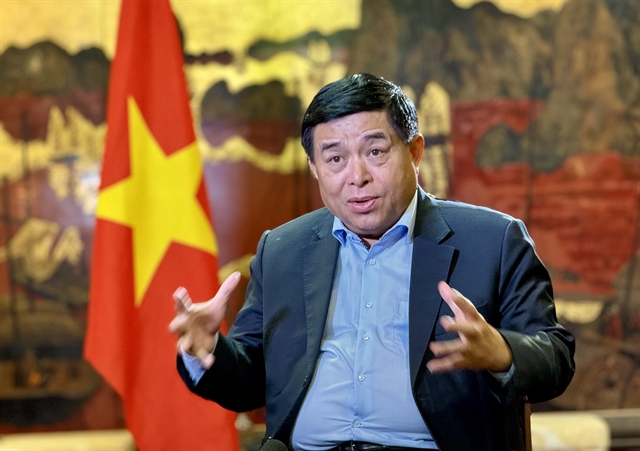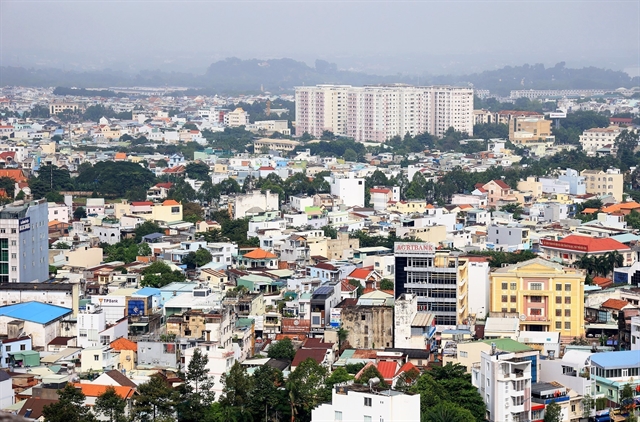 Opinion
Opinion

 |
| Minister of Planning and Investment Nguyễn Chí Dũng. — Photo from Việt Nam Government Portal |
Minister of Planning and Investment Nguyễn Chí Dũng talks to the Government News on the Southeast Region Development Plan, which will serve as a crucial foundation for removing bottlenecks, unleashing resources and fostering strong development in this important economic region.
The southeast region includes HCM City and five provinces of Đồng Nai, Bình Dương, Bà Rịa - Vũng Tàu, Bình Phước, and Tây Ninh. How significant is the development of the Southeast region and the country as a whole?
Currently, the average GRDP growth rate of the Southeast region is slowing down, lower than the national average growth rate. Alongside this, the contribution of the region to the national GDP is also on the decline.
The Southeast region also faces many difficulties and challenges, such as traffic congestion, inadequate infrastructure, flooding, climate change adaptation etc., While there are still many untapped potentials and advantages.
I believe regional planning is a crucial foundation for removing bottlenecks, unleashing resources, much like releasing a compressed spring to allow for powerful development, liberating significant resources.
The planning specifically embodies Resolution 24 of the Politburo regarding the vision for the development of the Southeast region.
It identifies development directions, development spaces and driving forces for each area, locality, or economic sector.
The outstanding feature of the regional planning is a modern, comprehensive infrastructure connectivity framework for the entire region. This is a prerequisite for rapid, sustainable and long-term development for the whole country.
Regarding the content of this planning for the region, it can be summarised in three words: Breakthrough, pioneering and connectivity.
We need breakthrough from mindset and vision to implementation.
As for pioneering, the Southeast region must be at the forefront of dynamism, creativity; pioneering in innovation and reform; pioneering in establishing leading sectors contributing to national development, to surrounding regions; pioneering in innovative science and technology; pioneering in education and training, socio-cultural development.
Regarding connectivity, this has become an inevitable trend. We need a tightly connected region with each locality supporting and complementing each other, linking together to fully exploit each other's potential advantages and contribute to greater value.
Resolutions of the 13th Party Congress and the Politburo have underscored the significance and importance of regional connectivity.
 |
| A view of Biên Hoà City, Đồng Nai Province. — VNA/VNS Photo Hồng Đạt |
You have highlighted that the Southeast has a special role in the country, being a very dynamic, creative region. What concerns do you have about this planning?
This planning spotlights HCM City – and the Southeast region – not as mere engine of growth of Việt Nam only, but we must compare with other countries in the Southeast Asian region, in Asia as a whole and globally; in line with the spirit of Resolution 24 of the Politburo.
We have elevated the scope of this planning, determined a new mission for the region, as well as HCM City, which must strive for higher level of breakthrough development.
If this time we finally have good planning and good implementation, with special policy mechanisms, with effective resource mobilisation, along with the collective determination to realise the planning by all localities in the region towards a common direction, a common goal, then I believe the Southeast can enjoy a robust growth.
With such new thinking and new vision, there will be new opportunities and new values.
Could you share more specifically about the innovative mindset in this planning?
There are many ways to approach innovation in mindset, but here, the perspective for the Southeast region is that it must be able to 'turn the impossible into possible', always pioneer, always lead. I believe that only with such a mindset can we achieve strong development.
HCM City or the Southeast region has always been leading the country in new economic models, new institutions, new mechanisms and new methods. In the future, we should grant new mechanisms with special characteristics, with superior qualities for the region to apply apply, which will certainly bring about positive development.
We have a planning that is a fruit of much enthusiasm, attention, innovation and breakthroughs. But equally important is the implementation of the planning. What do we need to pay attention to when implementing this planning?
We must enhance awareness on the role of regional connectivity and of regional planning, meaning when talking about regional connectivity, we must have a unified understanding before discussing action.
There must be special, superior policy mechanisms for the region. Recently, we had given special policies for HCM City. Now, we need to see what other policy mechanisms can help achieve the set goals, which need to be studied.
Currently, the Ministry of Planning and Investment, together with other ministries, sectors and localities, is considering special policy mechanisms for this region as well as other regions in the country, to propose suitable items according to each unique condition. From there, we can exploit the potential and strengths of each region and develop them.
Regions, especially the Southeast, must have mechanisms to mobilise their own resources. If we only rely on the State budget, it will be very difficult to realise the set goals because investment demand is very high from every direction. We need to boldly invest in development, utilise and exploit potential advantages and utilise macroeconomic reserves where possible (while ensuring safety), creating development momentum.
If we dare to invest, as long as it's invested properly and effectively for economic development, then this mindset is very important. Another mindset is that we need to focus on development to maintain stability, rather than focusing on stability to develop. For good planning, we need to be determined to implement faster, more resolutely, more effectively, then we will achieve the set goals and ambitions.
How is regional connectivity manifested in this planning?
Regional connectivity comprises many aspects, such as infrastructure connectivity, social connectivity, climate change connectivity, training and human resource connectivity. All of these need to have supporting connectivity to exploit the strengths of each region more effectively than just relying on themselves.
For example, the Long Thành International Airport, which aims to be a regional and global transit hub once completed. We will also form a aircraft maintenance and repair economic base – an economy revolving around this airport. When that happens, we need to see Long Thành not only as an airport for passenger transportation but also as the centre of an economic hub that serves domestic import and export activities, and it could also become a transit port in international transportation routes. We can entirely connect this port with others, like Cái Mép-Thị Vải in Bà Rịa-Vũng Tàu Province. This way, we will complement and support each other.
In the near future, our country will also form clusters around HCM City's belt roads No 3 and 4, with urban areas, industrial parks and services. We are gradually creating economic corridors, such as HCM City – Biên Hoà –Vũng Tàu, the routes from HCM City to Cần Thơ and Cà Mau. These routes will connect provinces within the Southeast region, and connect the Southeast regions the neighbouring regions to boost mutual development.
There is great responsibility on localities to implement this planning. What do you want to say to the localities involved?
I want to mention two points.
Firstly, we must realise that regional connectivity is an inevitable trend. We have to connect with each other to develop together.
Secondly, we must actively and effectively participate in the regional coordination council's mechanisms. Major issues of the region will be discussed at the regional coordination council. Localities need to actively participate, for when there are issues that individual localities cannot solve on their own, the regional coordination council will address them.
This activity is extremely important, along with regulations and mechanisms, active participation in the regional coordination council activities will surely find solutions for many regional issues in the coming time. — VNS




